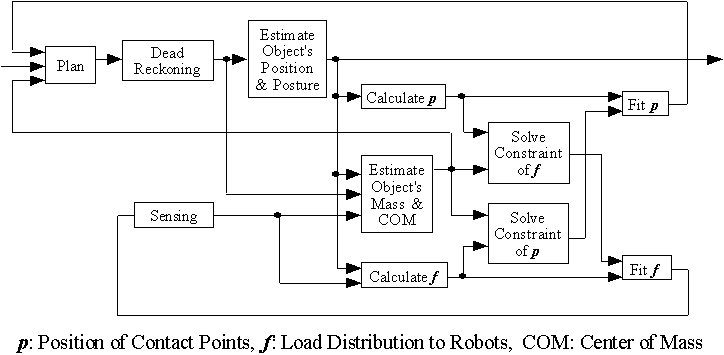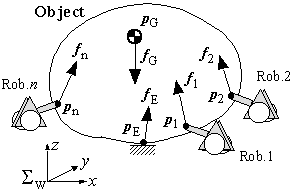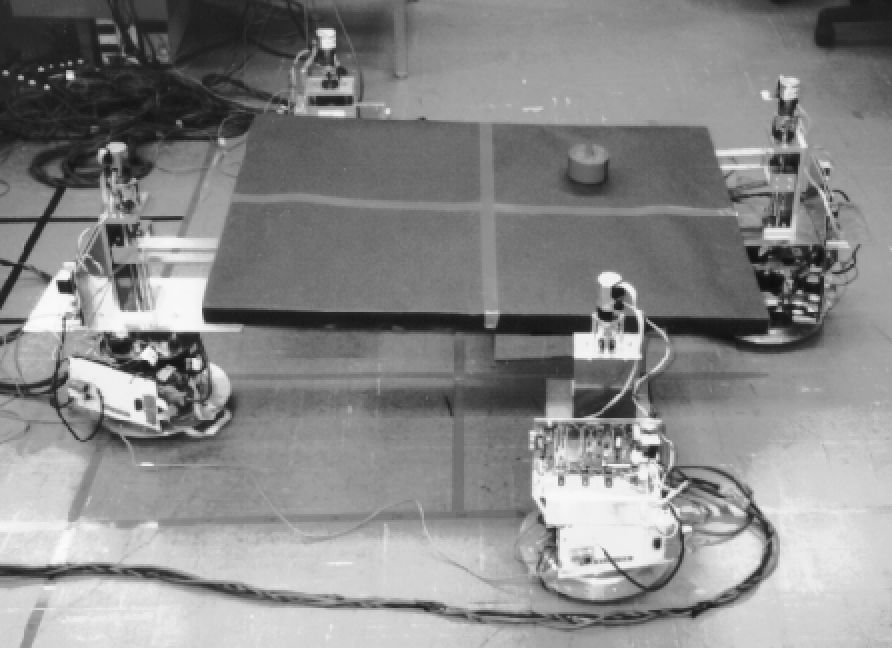
Nowadays industry is interested in transporting systems using changing their structure according to property and flow of objects. Introducing mobile robot system is expected for its free workspace and flexibility. We are going to solve the problems in applying mobile robot system for cooperative transportation. The settlement of this problem and variables is shown in Figure 2. Lifting up objects whose mass distribution is unknown and moving them need these processes as follows. (a) Obtaining mass and center of mass by sensing load to robots, (b) Determining the arrangement of robots giving optimal load distribution, (c) Way of replanning in case the result of sensing is different from an expected value, (d) Keeping positioning of robots relative to the object. The sequence of estimation and dependence among variables are shown in Figure 1. At first, the robots lift the object up where the object can be lifted up successfully. The property of an object is obtained from load data (a), and the system replaces robots to realize the load distribution equal (b). In transportation, the system obtains two constraints; one is on contacting points between robots and an object, another is on load distribution among the robots. Fitting sensed-values onto these constraints can prevent the transportation to be in failure occurring by motion error of robots(c). Transformation of the group is given when one robot sensed an excessive load to disable the robots to keep on transporting in current status. These problems on above except (c), have been verified by numerical simulation and experimental system (Figure 3).
Keywords: Mobile Robots, Active Sensing and Transformation
References


